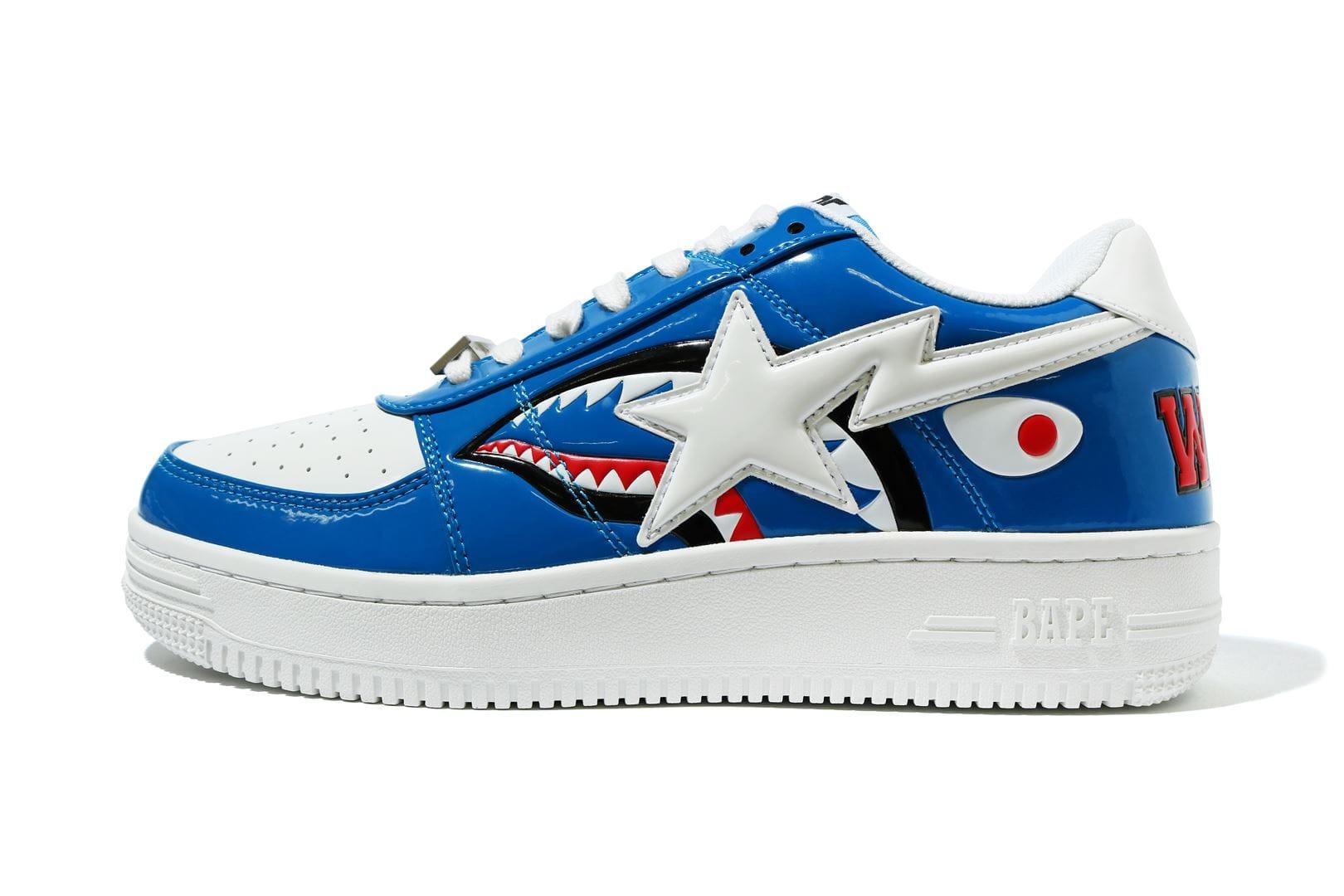The Timeless Streetwear Icon: A Deep Dive Into BAPESTA Sneaker Culture

The BAPESTA sneaker is one of the most recognizable symbols in the global streetwear community. Launched in the early 2000s by Japanese fashion label A Bathing Ape (commonly known as BAPE), the BAPESTA quickly gained a cult following. Designed by Nigo, the founder of BAPE, the sneaker was heavily inspired by the Nike Air Force 1 silhouette but with bold, flashy colors and a star-shaped logo instead of the swoosh. Over the years, BAPESTA has evolved from a controversial creation into a celebrated icon in streetwear culture.
The Origins of BAPESTA and Its Initial Impact on Fashion Culture
BAPESTA’s roots can be traced back to Tokyo’s Ura-Harajuku fashion movement, where brands like Undercover, Neighborhood, and BAPE redefined urban style. When BAPESTA debuted in 2002, it instantly stirred attention due to its familiar silhouette and striking use of patent leather and vibrant colors. This bold aesthetic stood in sharp contrast to the minimalist sneaker designs of the time. Instead of subtle branding, BAPESTA celebrated loudness, attitude, and rebellion—exactly what youth culture craved.
BAPESTA vs Air Force 1: Imitation or Innovation?
The comparison between BAPESTA and Nike’s Air Force 1 has always been part of the sneaker’s narrative. Both shoes share a similar structure, but where the AF1 stuck to classic simplicity, the BAPESTA dared to be loud and proud. Instead of Nike’s swoosh, BAPESTA introduced the “STA” lightning bolt—a clever twist that symbolized energy, uniqueness, and Japanese flair. BAPE never denied the influence, but rather embraced it, reinforcing their identity as disruptors in the fashion world. This open homage sparked debates, but also defined the sneaker's rebellious personality.
The Rise of Celebrity Co-Signs and Pop Culture Validation
BAPESTA’s global popularity skyrocketed when American hip-hop artists began wearing them. Pharrell Williams, Kanye West, and Lil Wayne frequently wore BAPESTAs, helping the shoe transcend borders. These endorsements transformed the sneaker from a Japanese streetwear item into an international fashion statement. The sneaker became a symbol of luxury in hip-hop culture, further solidifying BAPE’s reputation for blending Eastern street fashion with Western pop sensibilities.
Collaborations That Cemented BAPESTA’s Legacy in Sneaker History
What truly set BAPESTA apart were its unforgettable collaborations. From linking up with hip-hop labels like The Neptunes’ Billionaire Boys Club to partnerships with Marvel Comics, Coca-Cola, and SpongeBob SquarePants, the brand infused pop culture into every drop. These limited-edition BAPESTAs became collectibles, commanding high resale prices and dominating sneaker forums. Every release felt like a cultural event, contributing to the brand’s longevity and sustained hype over decades.
BAPESTA as a Symbol of Luxury Streetwear in the 2000s
During the early 2000s, BAPESTA sneakers were seen not just as fashion items but luxury commodities. While most streetwear brands aimed for accessibility, BAPE opted for exclusivity. BAPESTAs were hard to get, expensive, and only available in flagship stores or select locations. This scarcity elevated the brand’s status. The packaging, which included holographic boxes and matching accessories, added to the sense of owning a premium product. In a market oversaturated with basic sneakers, BAPESTA stood out as a wearable piece of art.
The Return of BAPESTA and Its Relevance in Today’s Sneaker Market
After a slight dip in visibility during the mid-2010s, BAPESTA made a powerful comeback. With retro designs, updated materials, and smart marketing, BAPE tapped into both nostalgia and modern tastes. The new wave of fashion consumers, including Gen Z sneakerheads and TikTok influencers, embraced the silhouette. The rise of Y2K fashion trends also played a key role in the sneaker’s resurgence, as its shiny patent leather and bright colors matched the era’s aesthetic.
Why BAPESTA Is Still Iconic in a Crowded Sneaker World
In a world overflowing with new sneaker releases every week, BAPESTA’s ability to stay relevant is a testament to its design and cultural resonance. The sneaker doesn’t try to follow trends—it sets them. Its boldness, storytelling, and connection to global pop culture give it a timeless quality. Whether you’re wearing the original patent leather versions or new eco-friendly releases, BAPESTA tells the world that you know your fashion history and are unafraid to stand out.
BAPESTA in the Future of Fashion and Collectibles
Looking ahead, the BAPESTA sneaker continues to evolve. With BAPE pushing into digital fashion, NFTs, and global collaborations, BAPESTA is more than a shoe—it’s a cultural artifact. Future releases will likely blend traditional elements with futuristic tech, keeping the brand at the forefront of innovation. Whether worn on the streets of Tokyo, New York, or Paris, BAPESTAs are poised to remain relevant for generations of streetwear lovers and collectors alike.
Conclusion: BAPESTA as a Legacy Brand That Defined a Generation
BAPESTA is more than a sneaker—it’s a symbol of streetwear revolution, global culture fusion, and fearless creativity. From its bold design and celebrity endorsements to its exclusive drops and collectible value, the sneaker has earned its place in fashion history.
- Vibnix Blog
- Politics
- News
- Liberia News
- Entertainment
- Technology
- Образование
- Art
- Causes
- Crafts
- Dance
- Drinks
- Film
- Fitness
- Food
- Игры
- Gardening
- Health
- Главная
- Literature
- Music
- Networking
- Другое
- Party
- Religion
- Shopping
- Sports
- Theater
- Wellness



